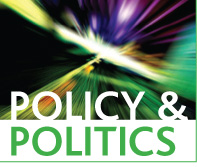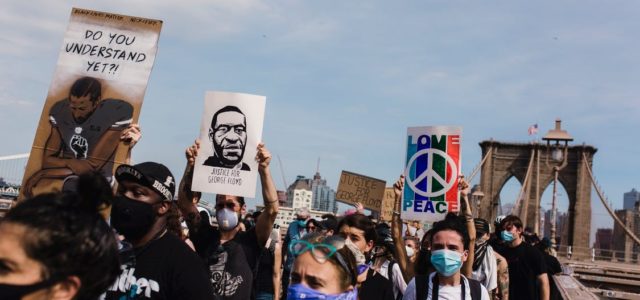Moshe Maor
 This section of Discover Society is provided in collaboration with the journal, Policy and Politics. It is curated by Sarah Brown.
This section of Discover Society is provided in collaboration with the journal, Policy and Politics. It is curated by Sarah Brown.
Since the U.S. response to 9/11 and the federal response to Hurricane Katrina, there has been increasing interest in the concept of disproportionate policy response and its two component concepts ─ policy over- and under-reaction. This policy response is understood to be a lack of ‘fit’ or balance between the costs of a public policy and the benefits that are derived from this policy, and between policy ends and means. So far, however, little scholarly attention has been devoted to this type of policy response and to its two anchor concepts. This is because of the impression that disproportionate policies are not carefully thought out; are not carefully implemented; are based on strategic misperceptions; and are bound to fail. The few studies that address this topic have concluded that this policy response is unintentional, occurring when policymakers engage in mistakes of omission or commission in the diagnosis and the prescription stages of decision-making.
In my recent article in Policy & Politics, I explore this phenomenon and try to clarify its context. Rising negativity and populism in democratic politics forces policy scholars and policymakers to ignore the negative connotations associated with these concepts and to recognize instead the repertoire of disproportionate policy response and, at times, its success in achieving policy goals. My recent article advances a conceptual turn whereby these concepts are re-entering the policy lexicon as types of intentional policy choices. It first distinguishes between disproportionate policy response by error (bounded rationality) and disproportionate response by choice, and advances a further distinction of such choices between two disproportionate policy options, namely, rhetoric and doctrine.
Probing the ‘plausibility’ of these terms, the article presents pertinent illustrations drawn from the military, financial and environmental domains in the US, Britain, Israel, Australia, Singapore and the European Union. These illustrations show that, during pre-crisis and in-crisis periods, both options can be purposefully designed to signal policymakers’ preference and/or to deliver the disproportionate responses in pursuit of policy goals.
The study of disproportionate policy response is complex because the concept is context-and time-sensitive. Yet this phenomenon is a gateway to some of the most significant aspects of modern politics and policy. Global and domestic threats coupled with more and more people who become skeptical about politicians and political institutions imply that policy overshooting is increasingly required for the public to perceive of policy action as sufficient and politicians as competent, at least in the short-term.
Trump’s immigration ban sits squarely within the category of intentional disproportionate policy response, and can best be understood when the emotional arena of policy is taken into account. In my article I show how prioritising policy effectiveness over policy costs (e.g., achieving a policy goal ‘at-all-costs’), leads to the design and implementation of policy over-reactions. This strategy goes hand-in-hand with the desire to cognitively and emotionally overwhelm the target audience and, in some instances, the general public as well. My article represents a move away from the strongly normative conceptions of policy analysis and evaluation which place efficient goal attainment centre stage. Instead, I advance a more nuanced analysis of disproportionate policy options which is applicable to many current (populist) politics.
Can we generalise the aforementioned findings, which concern manufactured crises, and apply them to instances of real ones? Specifically, did Trump employ a policy overreaction style during the 2020 protests in the US that followed the police killing of George Floyd in Minneapolis? The answer is positive. A classic example of communicating in absolutes is Trump’s tweet: “When the looting starts, the shooting starts” (May 29). This tweet falls squarely into the category of policy overreaction rhetoric because it is phrased in a non-negotiable manner, communicating a threshold that, if crossed, will trigger the most aggressive policy possible. It is framed in terms of direct causation, exhibiting an immediate relation with the expected results, making it clear that the outcome will be caused by Trump’s policy at hand and not by another actor or factor.
The tweet also capitalizes on the mental state of some publics by using language that is linked to law-and-order narratives, images, stories, and other ideational and symbolic carriers of meaning that are significant for Trump’s political base as well as for other segments of American society. Trump’s policy overreaction rhetoric cannot be understood without recognizing the fact that global and domestic threats, coupled with growing skepticism about office holders and political institutions, make policy overshooting increasingly necessary in order to ensure that the public perceives an action as sufficient and views an office holder as competent, at least in the short-term.
The same logic that guided Trump on the rhetorical front applies also to the implementation of policy “on the ground.” Classic examples of performing in absolutes include the use of tear gas, rubber bullets, and flash-bang grenades to disperse peaceful protesters outside the White House for a photo opportunity that took place nearby at St. John’s Episcopal Church; the low-altitude National Guard helicopter maneuvres over demonstrators to scatter them using a show of force that is usually reserved for combat zones; and the deployment of officers wearing generic riot gear with no identifiable markings across the capital. These actions allowed Trump to deploy the (fire) power of the state, highlighting the overwhelming scope of the price that he is willing to pay in order to neutralise this social crisis, thereby framing himself as the “president of law-and-order.”
These examples are indicative of a general shift in the relationship between populist leaders and the general public, as policy solutions are increasingly viewed through the worst-case scenario filter, leading to the adoption of domestic policies that are designed along a military model, prioritising a maximalist response over a proportionate one, while constantly assuming that the unanticipated all too often happens.
The same logic that guided Trump on the rhetorical front and “on the ground” applies also to Trump’s challenge to the Constitution. His wish to cognitively and emotionally overwhelm current and would-be demonstrators led him to clarify that he would consider the potential use of “the unlimited power of our Military” (May 30) and to deploy active-duty troops. These troops were stationed outside Washington only as a last resort to quell violence after protests resulted in arson and the defacement of government buildings near the White House. This policy move amounted to a challenge to the First Amendment right “to assemble, and to petition the Government for a redress of grievances.” A similar challenge to this constitutional right was also evident when peaceful protestors were forcibly dispersed in front of the White House, as mentioned earlier.
Although these forces remained on alert outside the capital, this policy move should be viewed in context. The human tragedy resulting from COVID-19 and the economic consequences of the spread of the virus made it very clear to Trump that the people’s emotional reserves are running low, thus calling for drastic action designed to “bring things back to normal.” From Trump’s point of view, a crisis that manifests a startup (company) rhythm, with a potential for escalation, necessitates immediate and drastic action in order to curb a potentially prevalent perception that matters are spiralling out of control. Trump therefore resorted to actions that challenge the constitution in order to rapidly end this social crisis.
Many scholars in the academic community still assume that in any policy move a president will, on the one hand, enter the political fray to approve the policy and implement it but, on the other, maintain his or her legitimacy for the next round of the policy cycle. The idea is that the need to enter into political fights, while maintaining legitimacy for the next policy cycle, imposes restraints on the president’s policies, moderates his/her behaviour, and shapes perceptions regarding proportionate behaviour and policy response. Trump is unaffected by any of these motivations, seeking mainly to push forward his preferred policies “at all costs”—i.e., viewing every political conflict as a zero-sum game—while ignoring political conventions and the norms regarding “things that are not done.” This is the essence of Trump’s policy overreaction style.
Moshe Maor is Professor of Political Science at the Hebrew University of Jerusalem.
Image: Life Matters on Pexels.
